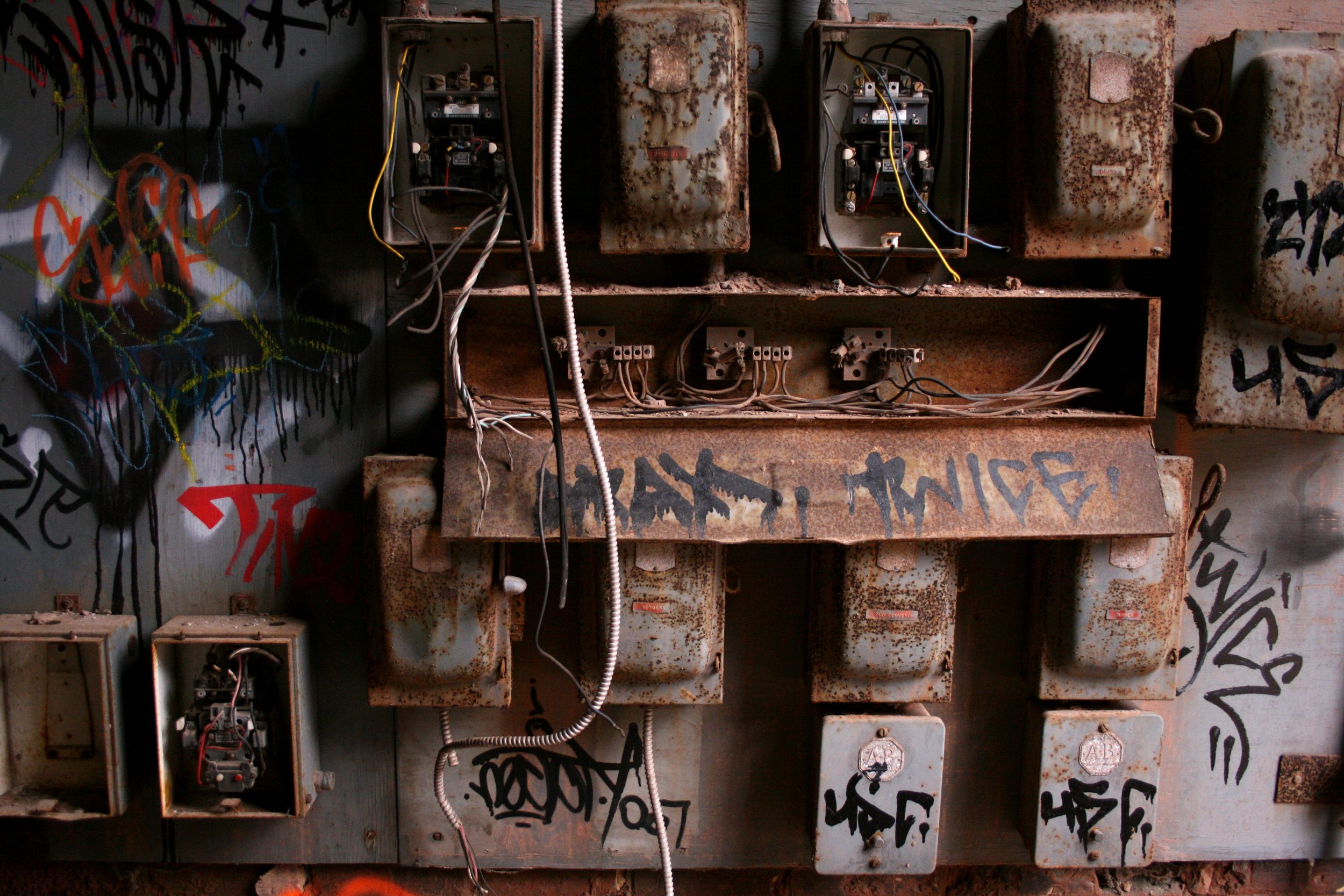Graffiti Works 1989-2008
Ongoing
Evergreen Brick Works
Bruce Beaton and Shannon Todd
“It just seemed like a wonder land for graffiti artists.”
ARTCHILD
Graffiti Writer on what it was like to work at the Brick Works.
graffiti (n.)
1851, for ancient wall inscriptions found in the ruins of Pompeii, from Italian graffiti, plural of graffito "a scribbling," a diminutive formation from graffio "a scratch or scribble," from graffiare "to scribble," ultimately from Greek graphein "to scratch, draw, write".
Evergreen is a national environmental charity founded in 1991. In 2008 Evergreen broke ground on a massive re-development of the former Don Valley Brick Works on Bayview Avenue in Toronto turning its crumbling post-industrial buildings, damaged flood-plain ecosystem and toxic, contaminated soil into an international showcase for green design and urban innovation.
Founded in the 1890’s the Don Valley Brick Works produced bricks that helped to build Toronto. Old City Hall and Massey Hall are built from bricks made at this site. In 1989 the brick makers abandoned the facility. The natural resources necessary for brick production were all tapped out. This abandoned site then slowly transformed - it became a place for illicit activities – particularly by area youth. These activities included raves, parties and even the occasional pig roast. The walls of the vacated buildings became a blank canvas for graffiti artists.
Graffiti exploded onto city walls and subway cars in the near bankrupt New York of the 1970s. Since then the increasing popularity of graffiti as an art form is a global phenomenon, winning commercial success for some of its artists and jail sentences for others. Graffiti is now a regular presence in popular culture and the contemporary art world.
Heritage storytelling takes inspiration from many sources. Traditionally, museums weave a narrative from real objects; a vase, a coat, a building or historic site. At the Evergreen Brick Works heritage engagement is inspired by the industrial, natural and geographical landscape of the site. Industrial heritage here however goes beyond the exploration of the narratives rooted in the initial intended use of the brick making machinery still on the site. Graffiti is also part of the story.
"It's a legitimate art form down here in the sense that there's a story line associated with it on how the site has been used. It's also aesthetically fantastic. In so many cases it's really beautiful and contrasts in a really exciting way with the older industrial material.”
`Geoff Cape, Executive Director of Evergreen
The Globe and Mail, August 23, 2012
In 2011, Mayor Rob Ford declared a “War on Graffiti”. Graffiti is often seen as a having a negative impact on a community because it is seen as an act of vandalism, which, when not stopped, shows a communities’ tolerance for property crimes and allegedly invites other illegal activities. Since the beginning of the “War on Graffiti” in Toronto, the City has sought to differentiate between acts of “Graffiti Vandalism” and “Graffiti Art”.
That’s not art. That’s graffiti. That’s nonsense.”
Mayor Rob Ford
The Globe and Mail, April 8, 2011
In 2011, before the appointment of a Graffiti Panel, The City of Toronto received a public complaint about the graffiti at the Evergreen Brick Works. The City responded by notifying Evergreen that the offending graffiti must be removed.
According to the Ontario Heritage Trust easement on the site – the graffiti at the Evergreen Brick Works – created before 2008 (when easement designation was granted) is seen as a valuable part of that heritage. This graffiti is evidence of the use of the property from 1989 to 2008 – nearly a fifth of the Brick Works’ entire lifespan.
The City of Toronto granted a graffiti removal exemption to Evergreen.
Graffiti Works 1989-2008 invites you to explore the graffiti at the Evergreen Brick Works. The vibrant colours and variety of styles stand out against the industrial kilns and loudly demand your attention. Perhaps you can connect what you see with other graffiti you see in and around your community.
This exhibition features a self-guided exploratory walking tour of the on-site graffiti and an introductory graffiti primer for the uninitiated. This interpretative pilot project will begin to tell the full history of these “lost” years. In 1989, the Don Valley Brickworks were abandoned by their owners. The site then became a location for a variety of illicit activities and a blank canvas for graffiti artists. Explore the graffiti around the site through this interpretive self-guided tour.
Bruce Beaton (2015) “Off the Wall,” Heritage Matters
Bruce Beaton and Shannon Todd (2015). “Reclaiming the Ruins: A Case Study of Graffiti Heritage Interpretation at the Evergreen Brick Works in Toronto.” In Troy Lovata and Elizabeth Olton, eds. Understanding Graffiti. Walnut Creek: Left Coast Press, 105-116.
Walking Tour
graffiti, politics, vandalism, Toronto, Don Valley, walking tour, contemporary art, heritage buildings





